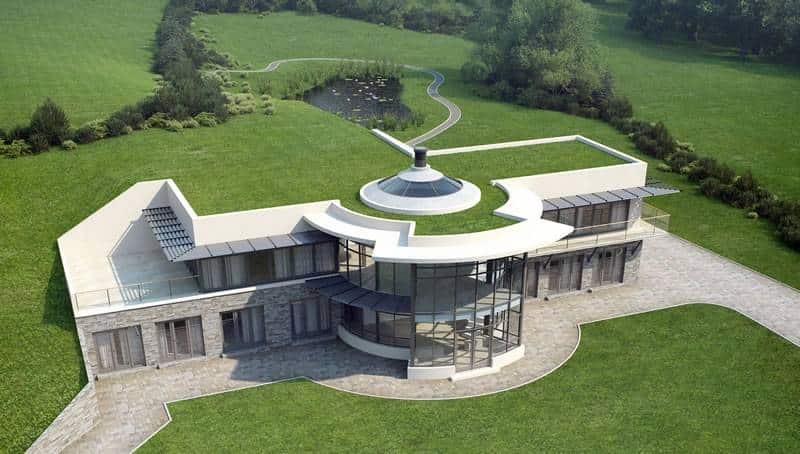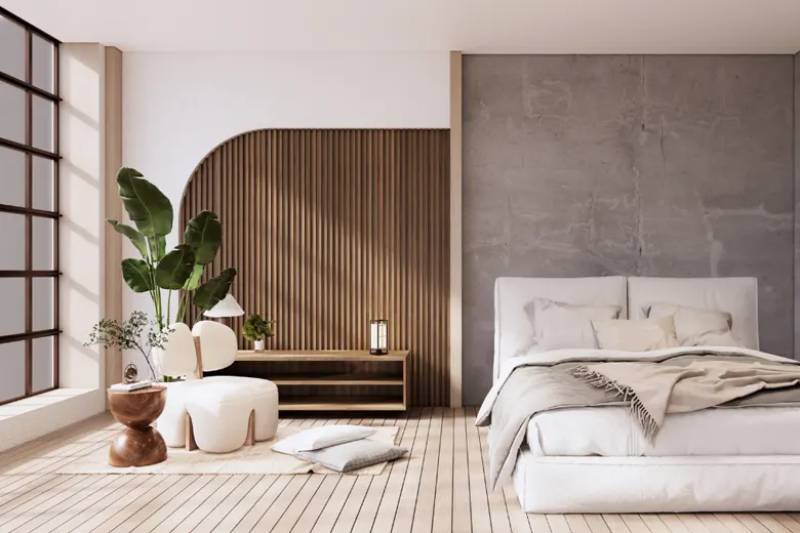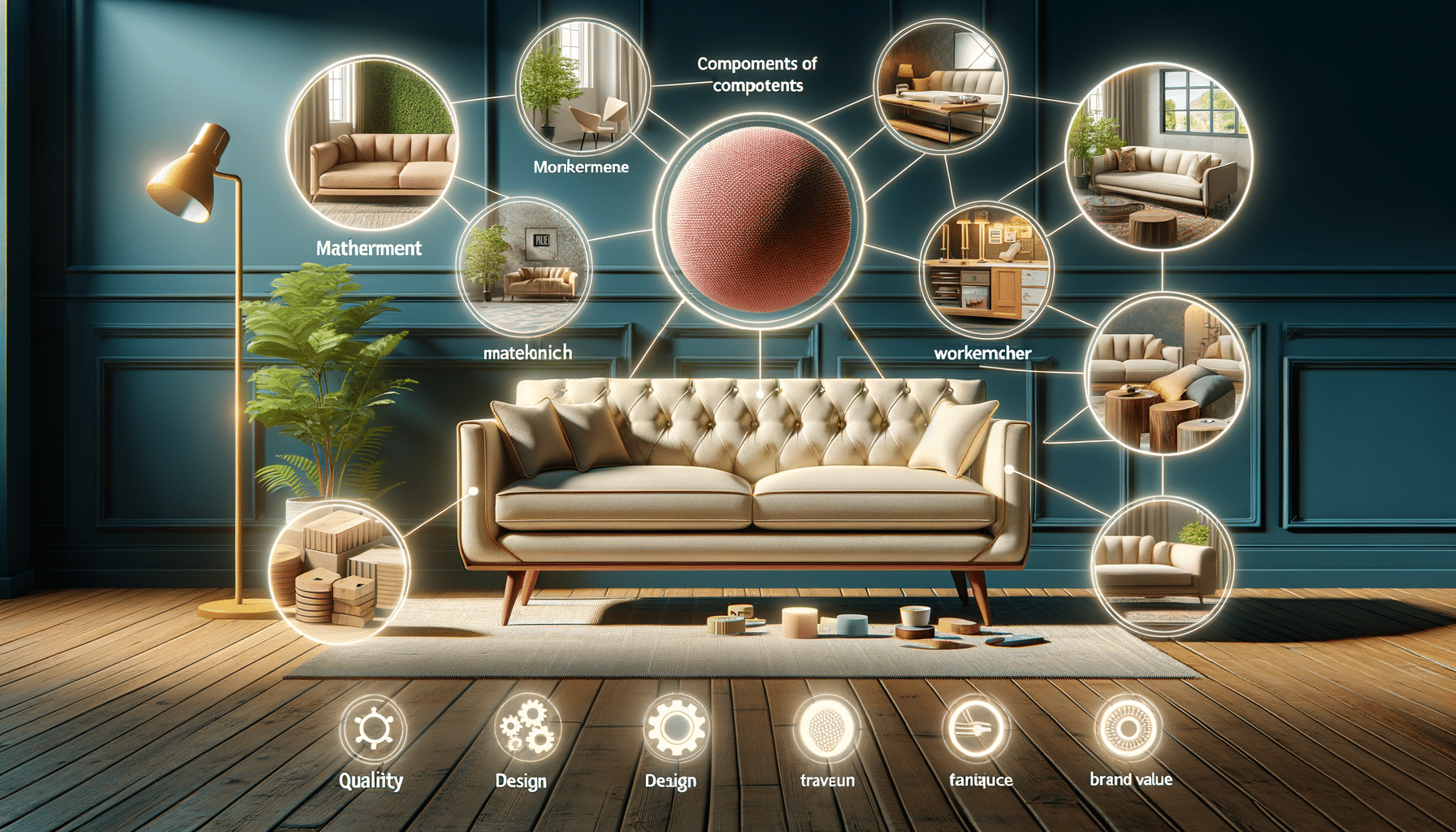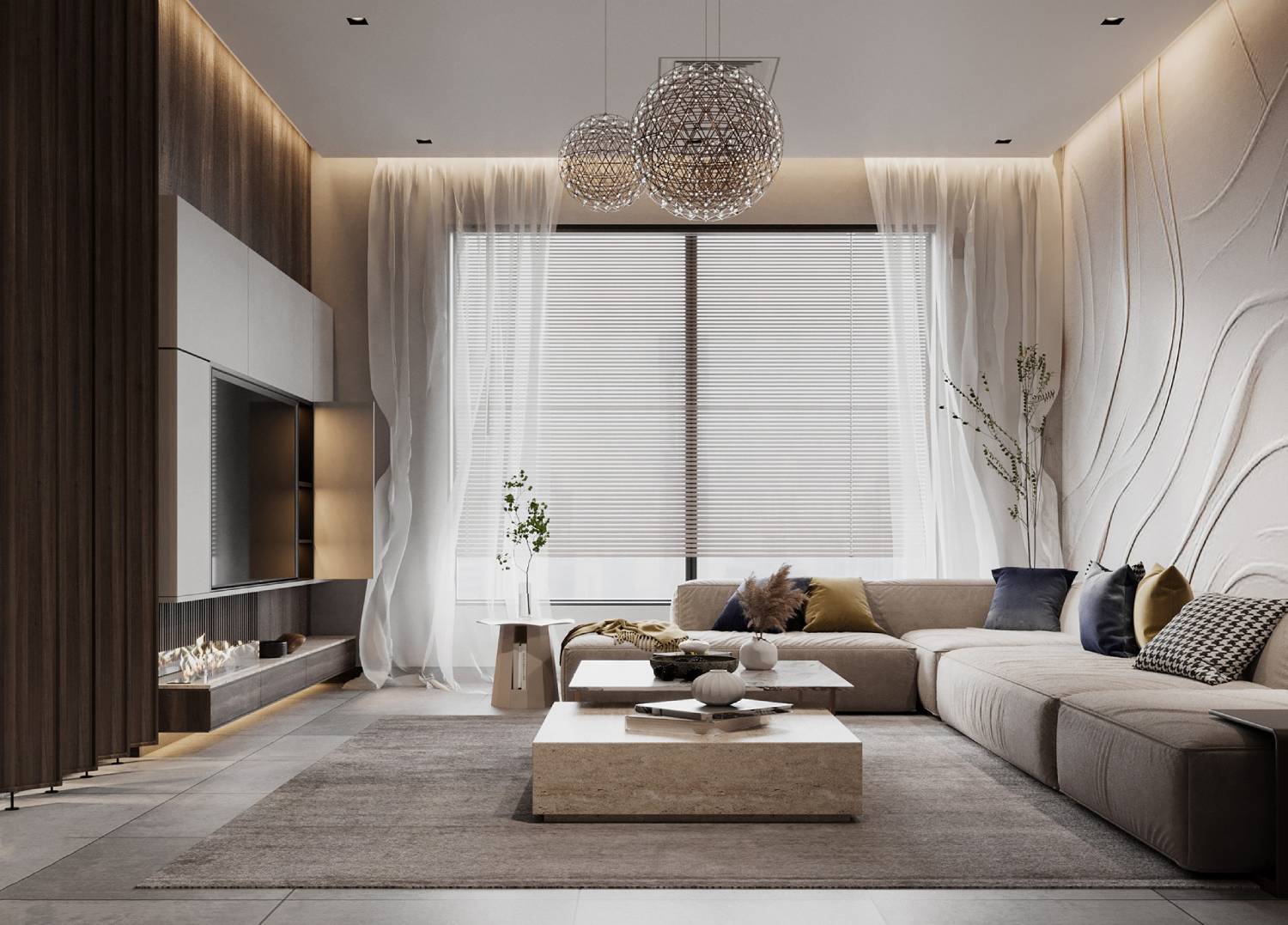
How to Build an Eco-Friendly Minimalist Home
Today, environmental issues are urgent. So, sustainable living has become a top priority. Eco-minimalism is a popular lifestyle. It blends sustainability with simplicity. At its core, eco-minimalism promotes living with less while ensuring that what we do use has minimal environmental impact. This philosophy matters a lot when building a home. Sustainable design makes a space look good and helps the planet, too.
Building an eco-friendly minimalist home is more than just a trend. It’s a commitment to a lifestyle that values both the environment and intentional living. Embrace sustainable minimalism, zero-waste ideas, and eco-friendly design. This way, you can create a home that shows your values. This also helps lower your ecological footprint. This guide will walk you through the essential steps to building a home that is both minimalistic and sustainable.
Quick Guide: How to Create a Cozy & Inviting Minimalist Living Room
- Create a warm, minimalist living room by choosing neutral colours, layering textures, and incorporating functional, high-quality furniture.
- Focus on simplicity and comfort, while adding personal touches through decor that brings joy without cluttering the space.
Key Benefits of an Eco-Friendly Minimalist Home
Why It Matters
Building and running homes affect the environment. They add carbon emissions, use natural resources, and create waste. Sustainable minimalism in home design reduces your ecological footprint. It also creates a healthier and more efficient living space.
Real-Life Applications
- Energy Efficiency: Eco-friendly homes use less energy for heating, cooling, and lighting. This cuts down your carbon footprint and lowers energy costs.
- Resource Conservation: Using sustainable materials and cutting waste helps save natural resources and reduces environmental harm.
- Healthier Living Space: Eco-friendly homes use non-toxic materials. They also improve indoor air quality, which helps occupants stay healthier.
- Long-Term Cost Savings: Sustainable materials and technology may cost more at first. However, they lead to big savings on energy and maintenance over time.
- Lower Carbon Footprint: Sustainable homes cut carbon emissions. They do this by using renewable energy and making resources more efficient.
- Higher Property Value: As more people want sustainable homes, eco-friendly features boost property value and attract future buyers.
Pro Tip: Layer textures with materials like wool, linen, and wood to add warmth and depth to your minimalist space.

Step-by-Step Guide to Building an Eco-Friendly Minimalist Home
Step 1: Planning and Design
Define Your Needs and Goals: Start by identifying your household’s needs and sustainability objectives. Think about household size, daily habits, and environmental issues to help you decide.
Choose a Sustainable Site: Selecting an appropriate location is crucial. Opt for a site that supports passive solar design, which uses natural light and heat to minimise energy consumption. Also, think about how close you are to public transport and important services. This can help you use your car less.
Step 2: Selecting Sustainable Materials
Use Recycled and Locally Sourced Materials: Pick reclaimed or local materials. This helps cut down transportation emissions. Reclaimed wood, recycled steel, and local stone are green choices. They bring character to your home.
Choose Non-Toxic Materials: Use low-VOC paints, finishes, and adhesives. This helps create a healthier indoor space without harmful chemicals.
Think About Modular Construction: Modular homes use prefabricated materials. This cuts down on construction waste and saves energy. So, they are a more sustainable choice than traditional building methods.
Step 3: Embracing Energy Efficiency
Install Solar Panels: Solar panels are a key component of sustainable minimalism. They use renewable energy. This cuts down on fossil fuel use and saves money on electricity bills over time.
Use Energy-Efficient Appliances: Pick appliances with high energy-efficiency ratings. Look for those marked with Energy Star. This helps cut down on electricity use.
Use Natural Light: Add big windows, skylights, and shiny surfaces. This helps you use more daylight and need less artificial light.
Install Smart Heating and Cooling Systems: Smart thermostats efficiently control your home’s temperature. They learn your habits and adjust settings, so they help save energy.
Step 4: Minimizing Waste
Create a Zero-Waste Strategy: Focus on waste reduction in your home. Use recycling and composting systems. Choose durable materials and avoid single-use products.
Water Conservation: Install low-flow toilets, faucets, and showerheads to minimise water use. Consider a rainwater harvesting system to collect and reuse water for irrigation.
Use Less Plastic: Choose natural materials such as bamboo, glass, or metal. This helps cut waste and protect the environment.
Important: Minimalism is about intentionality. Prioritise pieces that serve a purpose, promote comfort, and contribute to a calming environment.
Additional Expert Tips & Common Mistakes to Avoid
Best Practices for Sustainable Minimalism
- Simplify Your Space: Reduce clutter and focus on essential items to create a serene and functional environment.
- Invest in Quality: Pick strong, high-quality materials. They last longer and cut down on replacements.
- Use Natural Elements: Add plants and wood accents to boost indoor air quality and make your space look better.
- Focus on Functionality: A minimalist home should look nice and meet practical needs well.
Common Mistakes to Avoid
- Overlooking Insulation: Proper insulation is critical for energy efficiency. Ensure your home retains heat in winter and stays cool in summer.
- Ignoring Home Orientation: Design your home to use natural light and heat. This helps cut down on energy use.
- Neglecting Maintenance: Sustainable systems like solar panels and water-saving fixtures need care to stay effective.
- Choose Function Over Trend: Minimalist designs may look good, but focus on sustainability and usefulness in the long run.
Advanced Insights & Expert Recommendations
Embrace Smart Home Technology
Smart home technology can enhance sustainability. Smart thermostats, energy monitors, and automated lighting cut energy waste. They also boost efficiency.
Consider Future-Proofing
Design your home for flexibility. This way, it can adapt to new technologies, growing family needs, and changing environmental rules.
FAQ: Eco-Friendly Minimalist Homes
Is building an eco-friendly home more expensive?
While upfront costs may be higher, eco-friendly homes lead to long-term savings on energy, water, and maintenance.
Can I make my existing home more sustainable?
Yes! To make your home more sustainable, you can:
- Use energy-efficient appliances.
- Improve insulation.
- Choose non-toxic materials.
- Reduce waste.
How do I choose sustainable materials?
Choose materials that are locally sourced, recycled, or renewable. Good options include reclaimed wood, bamboo, and recycled metal.
What’s the best way to reduce energy use in my home?
- Maximise natural light.
- Install smart thermostats.
- Use energy-efficient appliances.
- Think about renewable energy, like solar panels.
How does minimalism contribute to sustainability?
Minimalism cuts down on what we buy. This means less waste and a smaller impact on the environment. It focuses on what we truly need instead of what we don’t.

A Sustainable Future Starts at Home
Creating a green minimalist home is fulfilling. It helps the Earth and boosts your well-being. Embrace sustainable minimalism, zero-waste strategies, and eco-friendly design. This way, you can create a home that is beautiful and good for the planet. Every small step toward sustainability counts. This holds true whether you’re building a new home or updating an old one.
Now is the time to take action. Begin planning your eco-friendly minimalist home now. Join the movement for a sustainable future! What changes will you make to your living space to embrace this lifestyle? Share your thoughts and experiences in the comments below!


